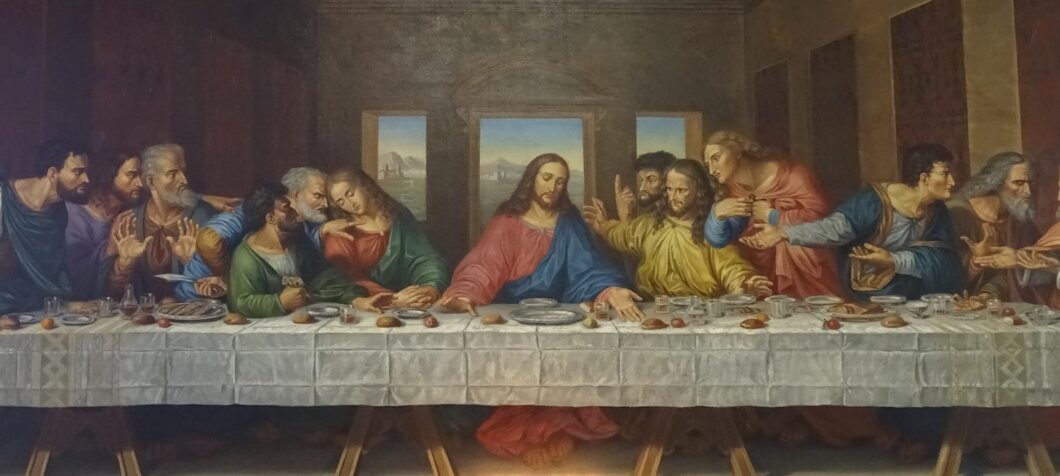Episode 6: The Door in the Last Supper.
Before DiCaprio, came Da Vinci. As great as the American actor may be, he or few other artists can hope to cast such a lengthy and enduring legacy as Tuscany’s Leonardo Da Vinci.
Leonardo Da Vinci started life as an artist and craftsman, but he was so much more than that. Not only was Da Vinci an artist, he was also a scientist, scholar, astronomist, botanist, physicist, and so much more. Da Vinci was a brilliant man, and his legacy in Italy lives on in so many ways throughout the culture, architecture, art, and beyond.
Leonardo Da Vinci’s legacy on Italian culture is permanently imprinted on Italians and anyone who visits or spends time in Italy. The Last Supper, one of the most notable of Da Vinci’s works, is located in Milan at the Santa Maria Del Grazie Church. Thousands of Italians and tourists come to see the work and are impacted by its beauty and religious impact.
Italy is a Catholic country, and The Last Supper is one of the most notable religious works ever created. Da Vinci’s other most famous work, The Mona Lisa, is located at the Louvre in Paris but is a perfect example of how Italian art can inspire outside Italy.
Da Vinci’s vast artistic inventory includes sketches of many plants and flowers and fixtures in the natural Italian landscape. He sketched landscapes of the Italian countryside and cities, towns he worked and traveled to. From Tuscan Landscapes to the Foothills of the Alps, Da Vinci’s drawings are time stamps of the beautiful Italian landscapes and how they were during the time he lived. Leonardo Da Vinci’s legacy and work preserves many Italian places, long before the time in which photography was able to document the mountains, wildflowers, churches, and grottos. Italy is an amalgamation of mountains, farms, seaside towns, cities, and more, and DaVinci shows this vastness in how his work explores so many different forms.
His surroundings inspired Da Vinci, and his ideas and principles illuminate how Italian scholars, artists, and citizens approach life and art.
The 7 Principles of Leonardo Da Vinci’s Legacy:
- Curiosità (Curiosity)
- Dimonstratzione (Independent Thinking)
- Sensazione (Refine Your Senses)
- Sfumato (Embrace Uncertainty)
- Arte/Scienza (Art & Science)
- Corporalita (Mind-Body Care)
- Connessione (Interconnectedness)
Da Vinci was born as the illegitimate son of a craftsman and peasant woman in 1452. His first trade was apprenticeship under Andrea Del Verrochio, an artist and sculptor based in Florence, though he would later spend much of his peak years as an artist and inventor in Milan. Visitors to Italy simply can not go to either region without making time to experience his works.
Under the tutelage of Del Verrocchio, Da Vinci’s talents developed and were soon apparent to everyone he encountered. Leonardo left Florence, became a court artist under the Duke of Milan, and started dabbling in engineering. Soon, engineering became more than dabbling, and people realized that Da Vinci’s designs were engineering feats.
Da Vinci was responsible for many engineering feats, including ones not fully used until years after his death and most that are still used today:
- Helical aerial screw (this became the helicopter)
- Winged flying machine (airplane)
- Diving equipment
- Self-Propelled Cart (this became the car).
He inspired Italians and continues to inspire them, as well as the many people from all over the world who visit Italy and view the work Da Vinci has in other places every day, week, month, and year. Da Vinci changed the world, and as the world continues to change, his art and inventions have lasting effects. After all, cars aren’t going anywhere, anytime soon, and neither is Da Vinci. When you visit Italy, you may not see Da Vinci’s art, but chances are you will walk through one of the many towns which inspired his work and experience aspects of culture that Da Vinci had a permanent impact on.
Da Vinci’s ideas inspired the Renaissance movement in Italy and a whole new way of thinking. So if you think of a great new idea while you are abroad, visiting Italy, it probably ties back to Da Vinci somehow! Da Vinci pushed himself to live to his full potential, and the entire region is very proud of him. Leonardo da Vinci’s legacy will carry on for years to come as he is one of the greatest Italians of all time! Come and visit and bring a notebook for the sketches you will make and the inspirations you will find.
Click here to listen to the podcast episode.
